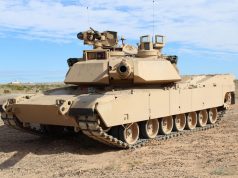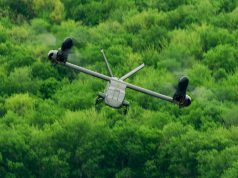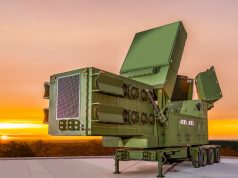American soldiers from Nuclear Disablement Team 2 took part in nuclear counterproliferation training with personnel from the US National Nuclear Security Administration and UK defense ministry that included exercises at the Sellafield site’s new glove box training facility.
The exercise was the first time one of the US Army nuclear disablement teams have trained in the UK.
NDT 2 is one of three NDTs from the 20th Chemical, Biological, Radiological, Nuclear, Explosives (CBRNE) Command, the US defense department’s premier deployable all hazards formation.
As a part of the 2018 Department of Defense Nuclear Posture Review, the NDTs provide advanced forensics and attribution capabilities in support of overseas and domestic missions. The teams exploit and disable nuclear and radiological weapons of mass destruction infrastructure and components to deny near-term capability to adversaries and facilitate WMD elimination operations.
Maj. Neal J. Trump, a nuclear operations officer from NDT 2, said the team began planning for the exercise in 2020 but COVID-19 postponed it.
In May 2022, the exercise took place at multiple locations in the United Kingdom. NDT 2 participated during the first half of the month at the Sellafield site in northwest England and at the Weeton Barracks about an hour from Manchester, England.
“The exercise as a whole validated the Department of Energy Mobile Packaging Teams in the receipt and processing of material collected from nuclear facilities and also integrated the participation of personnel from the DoE’s Plutonium and Uranium Verification Teams,” said Trump, an Iraq veteran and former infantry officer from Lancaster, Pennsylvania, who has commanded soldiers in the 82nd Airborne Division and 3rd US Infantry Regiment (Old Guard).
The exercise offered a unique training opportunity for NDT 2 to characterize an industrial-scale reprocessing facility and to recognize the equipment and materials used there, said Trump.
Trump said the NDT soldiers were able to conduct a reconnaissance and characterization of the Thermal Oxide Reprocessing Plant (THORP), as well as perform sampling operations of highly accurate simulants from large negative pressure gloveboxes.
During the exercise, NDT soldiers refined procedures for detecting nuclear material and collecting gamma ray spectra, as well as packaging simulated samples of nuclear material to transfer to the NNSA’s Mobile Plutonium Facility.
“Perhaps most importantly, the exercise allowed the team to further develop our relationship with the subject matter experts employed by DoE and NNSA. We hope that our participation in this exercise will open the door to future collaboration between the NDTs and the NNSA,” said Trump. “The highlight of the exercise, from my point of view, was the degree of interagency partnership building that was able to occur.”
At Sellafield, representatives from the NNSA’s Uranium Verification Team and Plutonium Verification Team not only observed the training but also participated in discussions about how both organizations can better support one another in the counterproliferation fight.
NDT 2 soldiers also used the US Department of Energy’s reach-back process while in the United Kingdom to send requests for information to a US-based team of subject matter experts who were able to provide technical guidance in support of the NDT characterization of the Thermal Oxide Reprocessing Plant.
“At the conclusion of our training, NDT 2 prepared and presented an exploitation brief to senior members of the 20th CBRNE Command and leadership of the NNSA’s Nuclear Compliance Verification and Mobile Packaging programs,” said Trump. “This interaction further served to demonstrate the capabilities of the NDTs to key interagency partners and acted as a relationship-building venue between key DoE professionals and NDT personnel.”
Jonathan P. Spencer, a manager at the Sellafield site, said joint training exercises give his site invaluable opportunities to share knowledge and learn from the other participants.
“While Sellafield’s challenges are different in many ways to the challenges faced by the NDT, there are some similarities,” said Spencer. “Seeing how other teams approach tasks like characterization, sampling and radiation and contamination control is very instructive. There are many learning points from the exercise which will help inform our work in the future. Finally, Sellafield recognizes the important role the NDT performs and takes pride in being able to play a small role in the NDT training and exercise program.”
The exercise was the first at the Sellafield site’s new glove box training facility.
“It was a great pleasure and honor for Sellafield Ltd to host this visit within THORP and our Glovebox Training Facility,” said Spencer. “It was a particular highlight to see NDT members calmly, methodically and professionally tackle the very challenging scenarios we created for them in this new facility.”



























